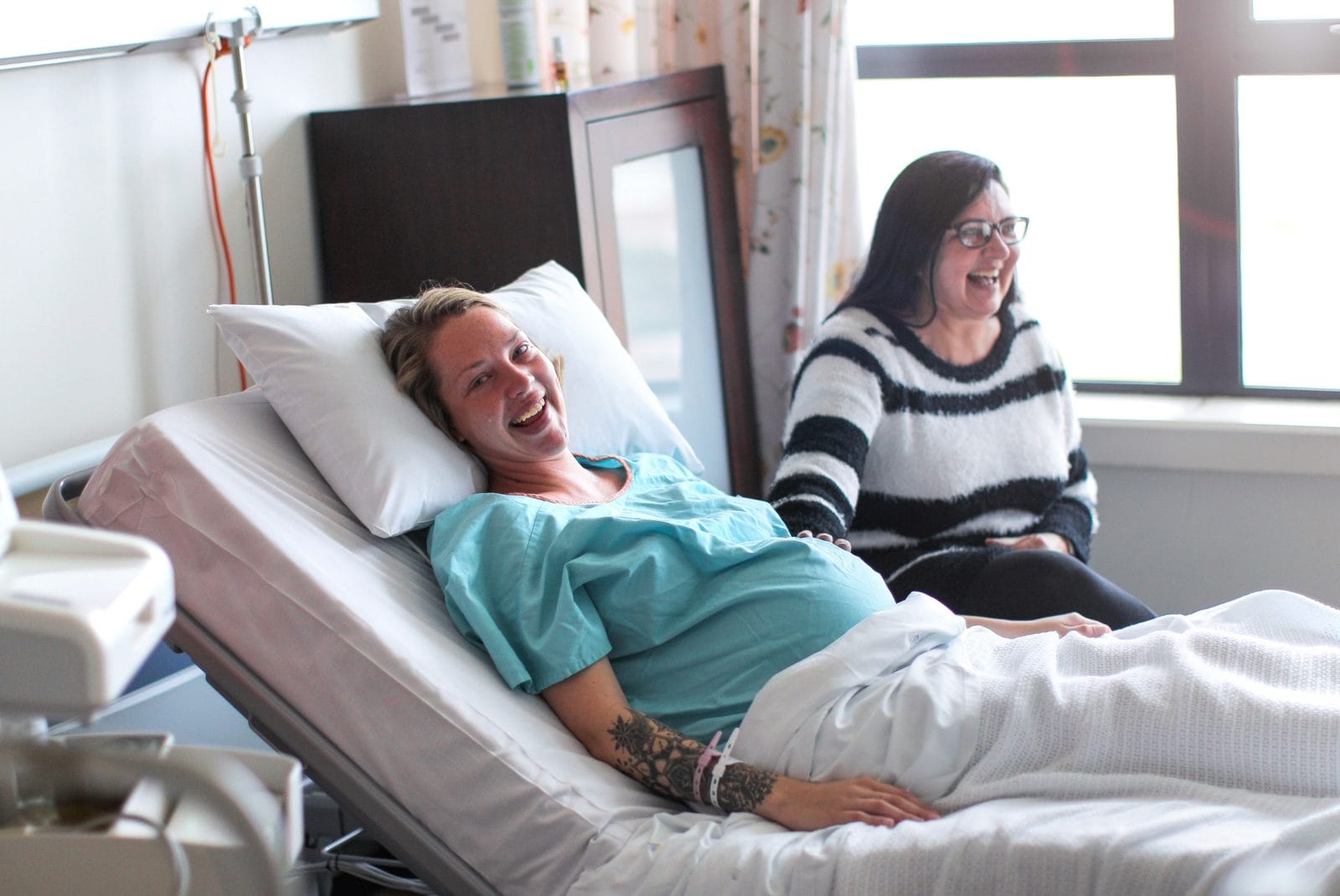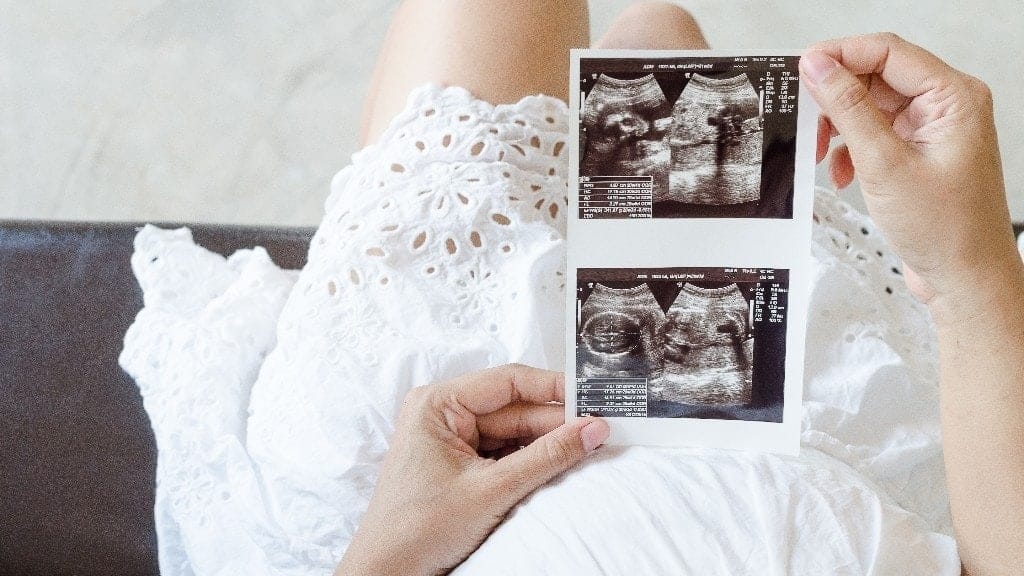My husband won’t be my birth coach—and we’re both okay with that

Our doula Amy—calm, experienced, and a veteran of childbirth herself—was the right person to have at the helm.
[Editor’s note: This story is a an essay about a women and her husband. While this is one example of one type of relationship, we understand, appreciate and celebrate that relationships come in all forms and configurations.]
The first birth I ever witnessed took place at home. It was my sister’s fourth and by this point she was an old hand, as was my brother-in-law. There were two licensed midwives standing by, but they didn’t get to earn their keep because my brother-in-law provided nearly 100% of the emotional support, coaching and delivery assistance. He was the one who caught my nephew and put him on my sister’s chest. He, not a paid medical professional, was the first one to see his newborn son’s face.
This all happened long before I even met my husband, but I always kept that image in the back of my mind as my ideal birth experience.
We’ve come a long way from the days when fathers were relegated to waiting rooms, pacing and smoking helplessly until the medical powers-that-be decided they were allowed to see their own wife and child. In the US it wasn’t until the 1970s that it began to be considered normal for fathers to be present during delivery.
Fathers finally taking their rightful place by their wives’ sides during childbirth prompted an exploration of what a father’s role in the delivery room could or should be. While many fathers attended their child’s birth as little more than a white-knuckled spectator, some fathers embraced a more hands-on role.
Dr. Robert Bradley, author of Husband-Coached Childbirth, developed the now-famous “Bradley Method” in which husbands are taught how to support and coach their wives through the childbirth experience. Many men got on board, successfully ushering their newborns into the world from hospital rooms or even at home, like my brother-in-law.
When we found out we were expecting our first child, I thought that was what I wanted. I dove head-first into the process of childbirth education, reading everything I could get my hands on, and writing and re-writing my birth plan obsessively. One night over dinner I was waxing eloquent about my new obsession with placentas when I realized that my husband was just not as interested in all this medical minutiae as I was. In fact, it was putting him off his dinner.
Slowly, I began to come to grips with the reality that my husband was just not my brother-in-law. My brother-in-law had assisted in delivering calves in his teenage years and the blood and guts of birthing had never phased him. My husband, on the other hand, when asked to watch Call the Midwife, looked at me as if I’d invited him to join in a Saw marathon.
I may have pictured a husband-assisted delivery as my ideal childbirth experience, but to him it was a worst nightmare. While I was imagining him coaching me through breathing exercises, tenderly cutting the umbilical cord and basically doing everything but pushing the baby out, he was psyching himself up to just get through the experience without vomiting on the floor.
As I got closer and closer to the big day, my own views on what kind of support I wanted from my husband during birth changed, too. Although I definitely wanted my husband there, both for support and so he could be present to welcome our child into the world, I didn’t know how much I actually wanted him to be the one “coaching” me through childbirth.
It wasn’t about not wanting my husband to “boss me.” He’s the one who taught me how to throw a Frisbee, shoot a bow, and use tons of obscure Excel functions. (I still find it hilarious that he set up an Excel spreadsheet to time my contractions during early labor.) But childbirth is a uniquely female experience, and I realized that for me it was important to be surrounded by female support, preferably from women who had gone through childbirth themselves.
We ended up having a doula: a friend of a friend who had had three children herself. My husband was there every step of the way, but Amy was the one who assured me over and over again that my body was doing exactly what it was supposed to do. Amy was the one who knew just where to apply pressure to counter the pain of the contractions.
Not only did she coach me, she coached my husband on what he could do to help me: sometimes supporting me in a standing position through an intense contraction, sometimes helping me remember to drink water when my body gave me a break. I wouldn’t have wanted to go through childbirth without my husband, but Amy—calm, experienced, and a veteran of childbirth herself—was the right person to have at the helm.
Even without being a “Bradley Method Husband,” the birth was a hard experience for my husband to go through. The blood and the fluids and the mess weren’t easy for him to deal with. What’s more, seeing me go through pain that he couldn’t take away was so draining that he felt physically ill as soon as it was all over.
While I was enjoying my birth high, he was feeling sick as a dog as the adrenaline subsided and the whole experience caught up with him. But the point was that he was there, and he was there when it wasn’t easy to be.
We’re expecting our second now. This time, instead of jumping into a birth plan that assumed my Excel-sheet-loving husband would suddenly morph into Dr. Bradley himself, I sat down and said to him: “I know the last birth was hard for you. Be honest: Do you want to be there this time?”
He said yes. A little wooziness wasn’t going to stop him from being at his baby’s birth.
Birth is an individual experience, and it is different not only for every woman but for every couple, too. A husband-assisted birth is a beautiful experience, but it is not for everyone. I didn’t marry a birth coach, I married my husband, and I wouldn’t trade him for 10 Dr. Bradleys.


































